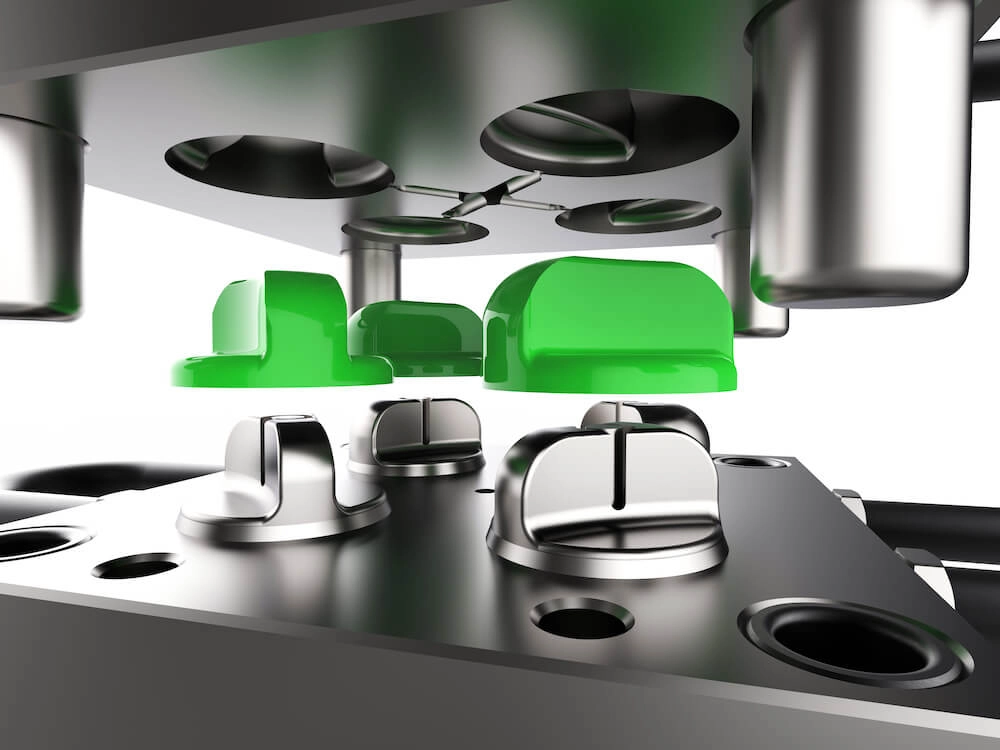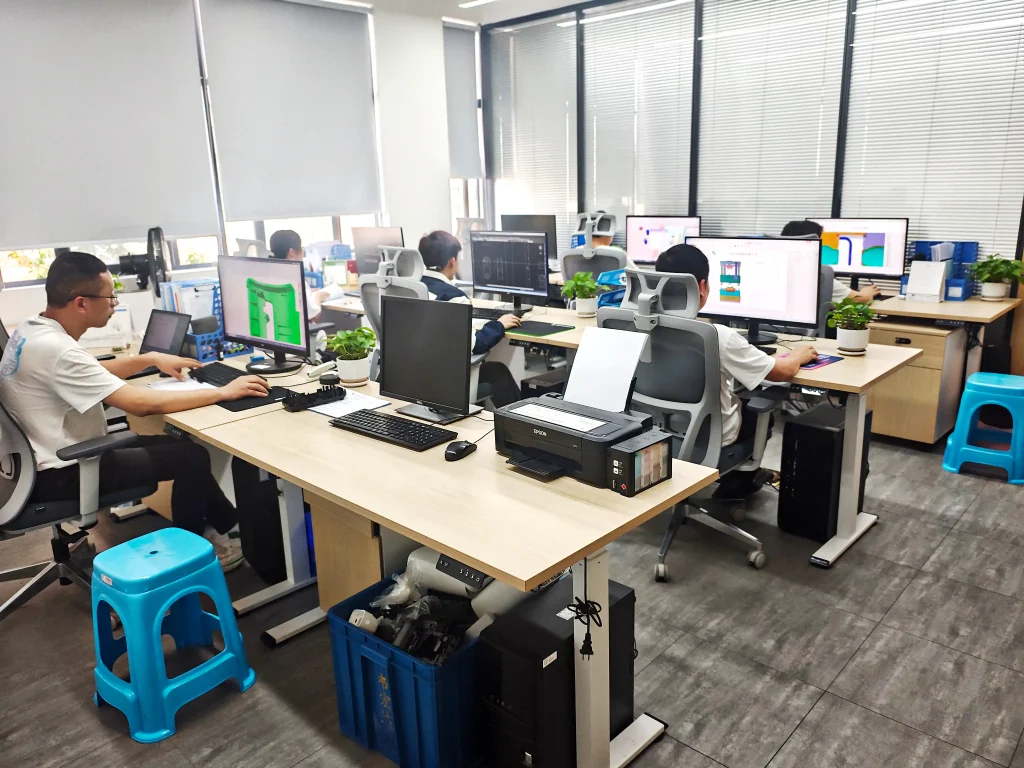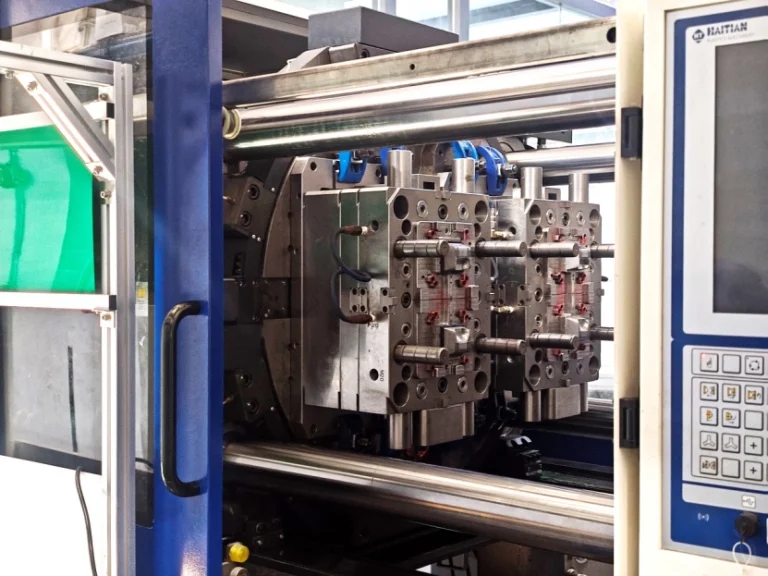Plastic injection molding prototypes are essential in today’s product development process. They link initial design ideas with full-scale production. These prototypes allow engineers to verify designs, examine material performance, and uncover potential defects before investing in costly production molds. In fields like automotive, medical devices, and consumer electronics, prototype injection molding ensures products fulfill functional, visual, and regulatory criteria.

What Is Prototype Injection Molding?
Defining Plastic Injection Moulding Prototypes
Plastic injection molding prototypes are preliminary samples produced via injection molding methods. They serve to test and enhance a product’s design. Usually, these prototypes consist of thermoplastics such as ABS, polypropylene, or nylon. This lets manufacturers assess how the final item will behave in real-life scenarios.
Unlike bulk production, which uses hardened steel molds, plastic molding prototype making often employs soft tooling or aluminum molds. These budget-friendly options permit swift adjustments and design alterations. They avoid the steep expenses linked to full-scale production tooling.
Why Prototyping Matters in Manufacturing
Prototype injection molding is vital for lowering production risks. It also improves product effectiveness. By crafting a tangible sample before mass manufacturing, firms can spot and fix design errors early. This reduces expensive corrections later. The approach further supports:
- Functional checks to confirm structural soundness and material endurance.
- Visual reviews to perfect surface textures, hues, and part features.
- Verification of assembly steps to ensure parts work with others.
Investing in plastic injection moulding prototypes helps manufacturers sidestep last-minute design shifts. Such changes might delay production plans and increase costs.
The Process of Creating Plastic Injection Moulding Prototypes

Step 1 – Design & 3D Modeling
The first stage in prototype injection molding uses advanced CAD (computer-aided design) software. Engineers craft detailed 3D models of the product. These digital layouts guide mold creation. They enable engineers to mimic stress patterns, material movement, and possible flaws.
To confirm manufacturability, designers perform a Design for Manufacturing (DFM) review. This examines elements like wall thickness, draft angles, and undercuts. The review prevents production hurdles before mold-making starts.
Step 2 – Rapid Prototyping Plastic Injection Molding
Once the design is set, a prototype mold is made using soft tooling, aluminum, or mild steel. These materials differ from conventional hardened steel molds. They provide faster completion times—often within 2 to 4 weeks—and reduced starting costs.
Rapid prototyping plastic injection molding methods hasten development. Manufacturers can promptly create a group of prototypes for testing. This technique is especially useful in sectors needing quick design updates, like consumer electronics and medical device production.
Step 3 – Testing & Iteration
After molding the first prototypes, thorough testing kicks off. Engineers inspect the parts for size precision, mechanical robustness, and resistance to conditions like heat, moisture, and chemicals.
For instance, if a prototype shows sink marks or warping, changes can adjust the mold design or material blend. These tweaks happen before settling on production tooling. This step-by-step method ensures the final item meets all functional and visual standards before large-scale manufacturing begins.
Types of Plastic Molding Prototype Making
Bridge Tooling for Low-Volume Production
Bridge tooling acts as a midpoint between prototyping and mass production. It uses affordable aluminum or soft steel molds. These produce low-volume prototype injection molding batches, typically from 100 to 10,000 units.
Bridge tooling works well for:
- Trial production runs before locking in full-scale tooling.
- Early market tests to collect user opinions.
- Making unique parts not requiring high-volume output.
Custom Injection Moulded Prototypes for Niche Applications
Some industries need custom injection moulded prototypes suited to specific performance and regulatory demands. Examples include:
- Medical devices: Biocompatible plastics for surgical tools and drug delivery setups.
- Automotive components: Heat-resistant polymers for engine parts and dashboard units.
- Consumer electronics: Sturdy casings for smartphones, wearables, and smart home gadgets.
Custom prototyping handles sector-specific needs—like sterilization suitability for medical tools or heat tolerance for automotive parts—before full production starts.
Overmolding and Insert Molding Prototypes
Overmolding and insert molding methods create multi-material prototypes. These boost product utility. Overmolding layers a second material over a core part. Insert molding embeds metal or other substances into the plastic piece.
These approaches often apply to:
- Medical grips and handles with soft-touch finishes.
- Electronic casings with built-in conductive parts.
- Automotive switches and control panels with layered materials.
Advantages and Challenges of Prototype Injection Molding
Key Benefits for Product Developers
Using plastic injection moulding prototypes brings several perks, including:
- Speedier market launch by quickly confirming product designs.
- Lower tooling expenses by catching design issues before mass production.
- Better product results through repeated testing and material picks.
Spotting and fixing flaws early lets firms release top-notch products while cutting financial risks.
Common Challenges to Anticipate
Despite its advantages, prototype injection molding has drawbacks, such as:
- Significant initial tooling costs: Soft tooling costs less than production molds, but the investment can still be notable for small projects.
- Material limits: Some prototype materials don’t fully match final production plastics. This can lead to testing inconsistencies.
To counter these issues, manufacturers must wisely choose materials and molding techniques. These should closely reflect the final product’s traits.
Innovations in Rapid Prototyping Plastic Injection Molding
AI-Driven Design Optimization
Artificial intelligence (AI) is reshaping plastic injection moulding prototypes. It forecasts potential flaws before physical production starts. AI-powered simulations study factors like material flow, cooling speeds, and stress spread. This cuts down on repeated adjustments.
Sustainable Material Choices for Prototypes
As environmental worries rise, manufacturers use biodegradable resins and recycled plastics in prototype work. These choices reduce waste. They also match sustainability aims in fields like packaging and medical devices.
Hybrid Approaches (3D Printing + Injection Molding)
Hybrid prototyping blends 3D-printed molds with injection molding. This speeds up product checks. Using additive manufacturing for low-volume molds shortens lead times and costs. It keeps injection molding’s accuracy and reliability.
How to Choose a Partner for Custom Injection Moulded Prototypes
Evaluating Technical Expertise and Industry Experience
Choosing the right manufacturing partner means checking factors like:
- Established skill in plastic injection moulding prototypes.
- Quality certifications and alignment with industry rules.
- Capacity to grow from prototyping to full production.
The Role of Scalability in Prototype-to-Production
A solid prototyping partner should also aid mass production. This ensures a smooth shift from early prototypes to high-volume output. It limits disruptions and keeps part quality steady across production stages.
Silkbridge: Combining British Innovation with Chinese Manufacturing Efficiency

Silkbridge, launched in 2014 by a British design engineer, excels in custom injection moulded prototypes and scalable production solutions. Their services include:
- Mold design and rapid prototyping for diverse sectors.
- PCB development and electronic assembly for combined products.
- Cost-effective production using China’s advanced manufacturing strengths.
By fusing UK-led design know-how with efficient Chinese production, Silkbridge offers precise plastic injection molding prototypes for varied uses.
FAQs About Plastic Injection Moulding Prototypes
1. How long does rapid prototyping plastic injection molding take?
Typical timelines range from 2 to 6 weeks, depending on complexity.
2. Can I use the same mold for prototypes and mass production?
Prototype molds usually use soft tooling. Hardened steel molds are needed for large-scale production.
3. What materials work best for plastic molding prototype making?
ABS, polypropylene, and nylon are common picks, but specialized resins exist too.
4. Is prototype injection molding cost-effective for small batches?
Yes, bridge tooling offers a practical solution for small runs.
Ready to turn your product into reality? Contact Silkbridge today to talk about your plastic injection moulding prototypes needs. From rapid prototyping to full-scale production, our team ensures smooth transitions at every step. Request a free quote now at contact@silkbridgeltd.com. Or use our WhatsApp link https://wa.me/8618122838771 with your questions or guidance on your consumer electronics design and production project—we’re here to help bring your electronic ideas to life!



